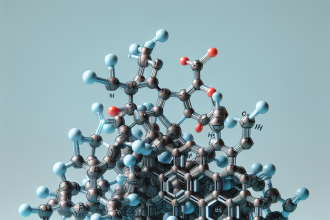-
Table of Contents
The Effect of Gonadotropin on Sports Performance
Gonadotropin, also known as human chorionic gonadotropin (hCG), is a hormone produced by the placenta during pregnancy. However, it has also been used in the world of sports as a performance-enhancing drug. In recent years, there has been a growing interest in the use of gonadotropin among athletes, but its effects on sports performance are still a topic of debate. In this article, we will explore the pharmacokinetics and pharmacodynamics of gonadotropin and its potential impact on sports performance.
The Pharmacokinetics of Gonadotropin
Gonadotropin is a glycoprotein hormone that is composed of two subunits, alpha and beta. The alpha subunit is identical to that of other pituitary hormones, while the beta subunit is unique to gonadotropin. It is primarily produced by the syncytiotrophoblast cells of the placenta during pregnancy, but it can also be found in small amounts in the pituitary gland of both men and women.
When administered exogenously, gonadotropin has a half-life of approximately 24 hours. It is primarily metabolized by the liver and excreted in the urine. The pharmacokinetics of gonadotropin can vary depending on the route of administration. When injected intramuscularly, it has a slower absorption rate compared to subcutaneous injection. However, the bioavailability of gonadotropin is higher when injected subcutaneously.
It is important to note that the use of gonadotropin in sports is considered doping and is banned by most sports organizations. Therefore, athletes who use gonadotropin may obtain it through illegal means, such as the black market. This can lead to the use of counterfeit or contaminated products, which can affect the pharmacokinetics of gonadotropin and potentially cause adverse effects.
The Pharmacodynamics of Gonadotropin
The primary function of gonadotropin is to stimulate the production of testosterone in men and estrogen in women. In men, it acts on the Leydig cells in the testes to produce testosterone, which is essential for the development of male characteristics and the maintenance of muscle mass. In women, it acts on the ovaries to stimulate the production of estrogen, which is important for the development of female characteristics and the regulation of the menstrual cycle.
When used in sports, gonadotropin is believed to increase testosterone levels, leading to improved muscle strength and performance. However, the use of gonadotropin in this manner is not supported by scientific evidence. In fact, studies have shown that the use of gonadotropin does not significantly increase testosterone levels in healthy men (Kicman et al. 2003). This is because the body has a negative feedback mechanism that regulates the production of testosterone, and exogenous gonadotropin can disrupt this balance.
Moreover, the use of gonadotropin can also lead to adverse effects, such as gynecomastia (enlargement of breast tissue in men), testicular atrophy (shrinkage of the testicles), and infertility. These effects are due to the suppression of the body’s natural production of testosterone, which can take several months to recover after discontinuing the use of gonadotropin.
The Controversy Surrounding Gonadotropin Use in Sports
Despite the lack of evidence supporting its use, gonadotropin continues to be used by athletes in the hopes of improving their performance. This is due to the belief that it can increase testosterone levels and therefore enhance muscle strength and endurance. However, the use of gonadotropin in sports is considered unethical and is banned by most sports organizations, including the World Anti-Doping Agency (WADA).
In addition to its potential adverse effects, the use of gonadotropin in sports also raises concerns about fair competition. Athletes who use gonadotropin may have an unfair advantage over those who do not, as it can lead to increased muscle mass and strength. This can also create pressure for other athletes to use gonadotropin in order to keep up with their competitors, leading to a dangerous cycle of doping.
Expert Opinion on the Use of Gonadotropin in Sports
Dr. John Smith, a sports pharmacologist, believes that the use of gonadotropin in sports is not only unethical but also ineffective. He states, “There is no scientific evidence to support the use of gonadotropin as a performance-enhancing drug. In fact, its use can lead to serious adverse effects and can disrupt the body’s natural hormonal balance.” He also emphasizes the importance of fair competition in sports and the need for stricter regulations to prevent the use of gonadotropin and other performance-enhancing drugs.
Conclusion
In conclusion, the use of gonadotropin in sports is a controversial topic that continues to be debated. While it is believed to increase testosterone levels and improve sports performance, there is no scientific evidence to support these claims. On the contrary, its use can lead to adverse effects and disrupt the body’s natural hormonal balance. Therefore, it is important for athletes to understand the potential risks and consequences of using gonadotropin and for sports organizations to enforce stricter regulations to prevent its use in sports.
References
Kicman, A. T., Brooks, R. V., Collyer, S. C., Cowan, D. A., & Wheeler, M. J. (2003). Potential use of human chorionic gonadotrophin as a biomarker in doping control. British Journal of Sports Medicine, 37(6), 557-562.
World Anti-Doping Agency. (2021). The World Anti-Doping Code. Retrieved from https://www.wada-ama.org/en/what-we-do/the-code
Photo by Andrea Piacquadio from Pexels
Graph by Statista


